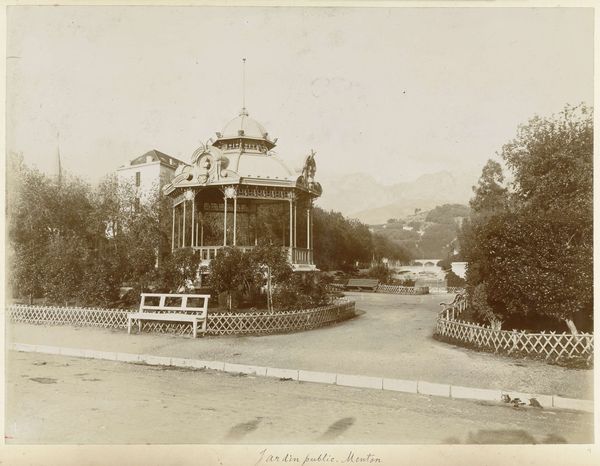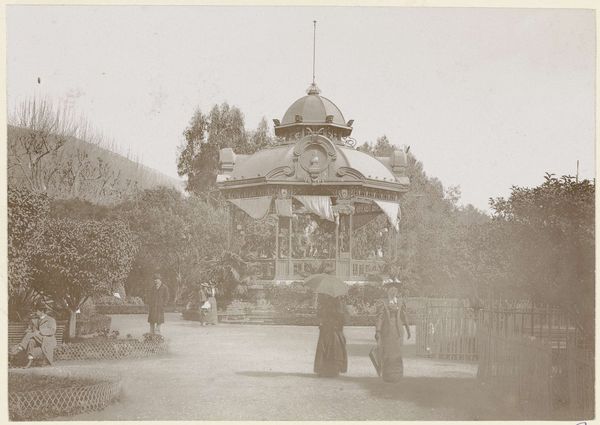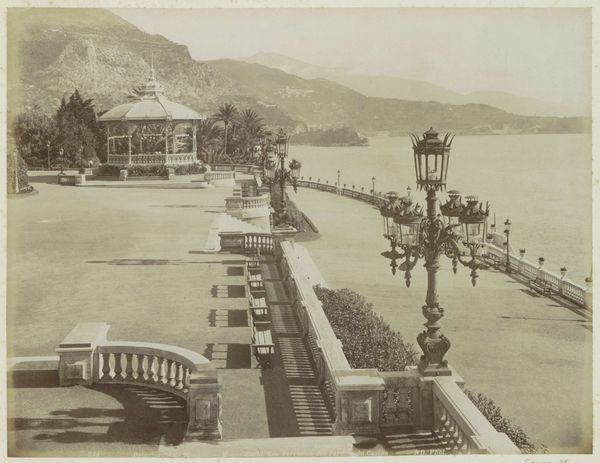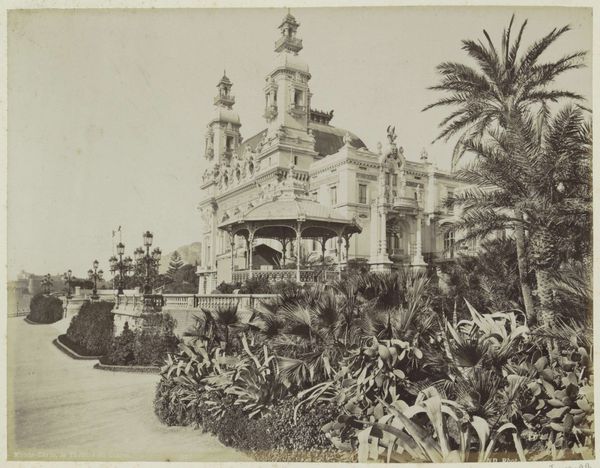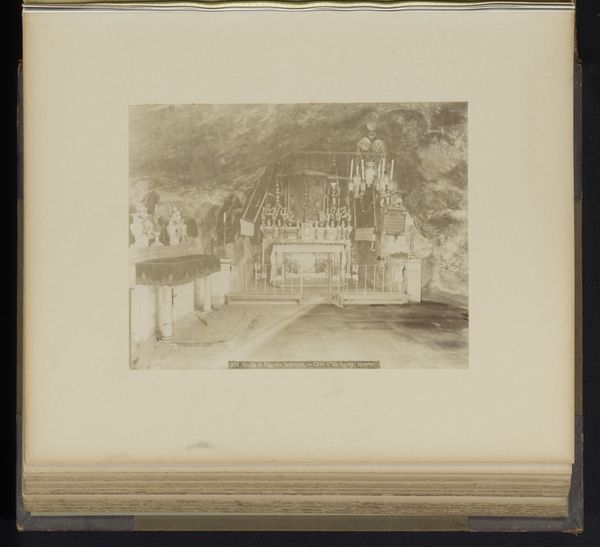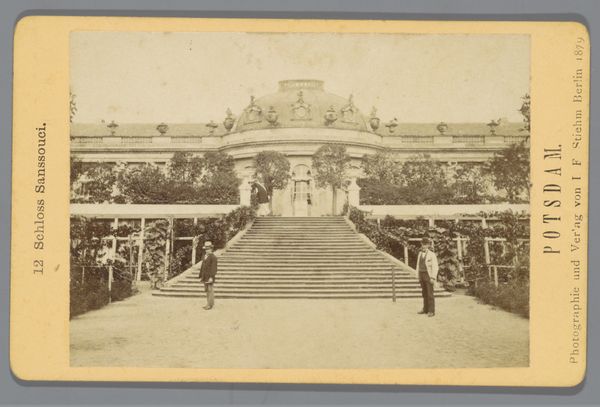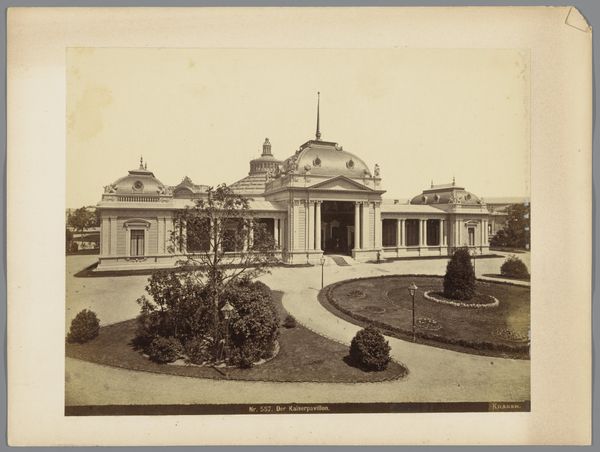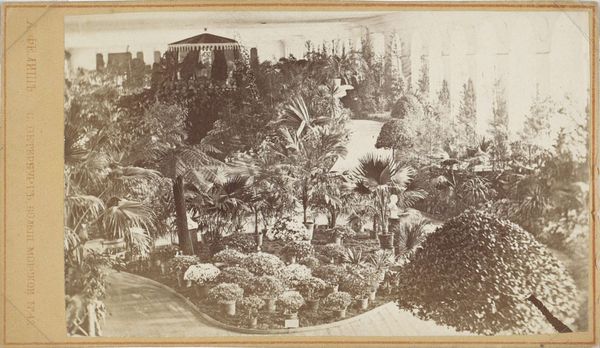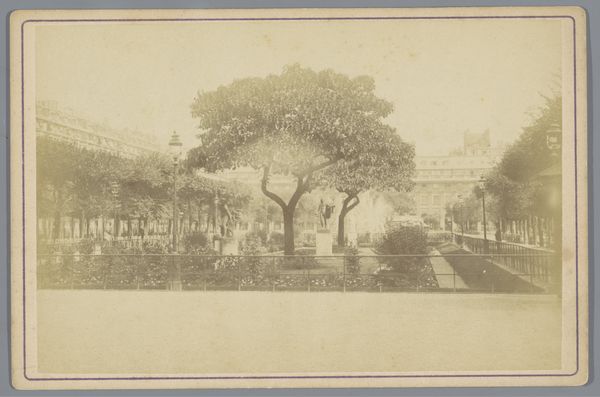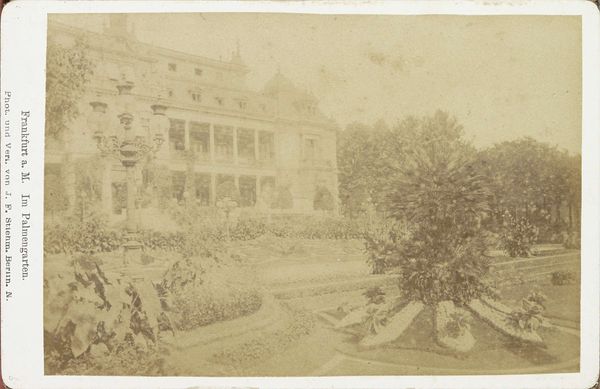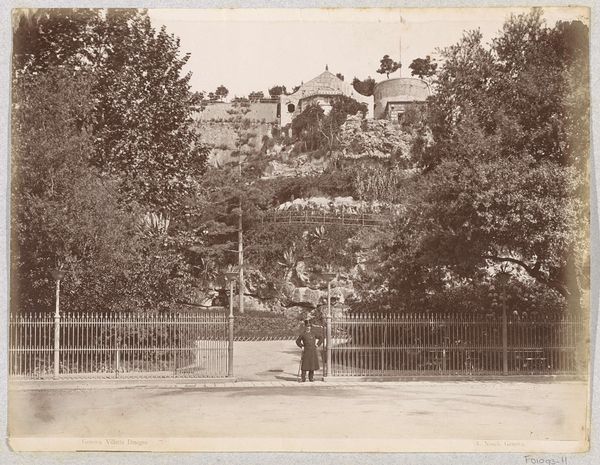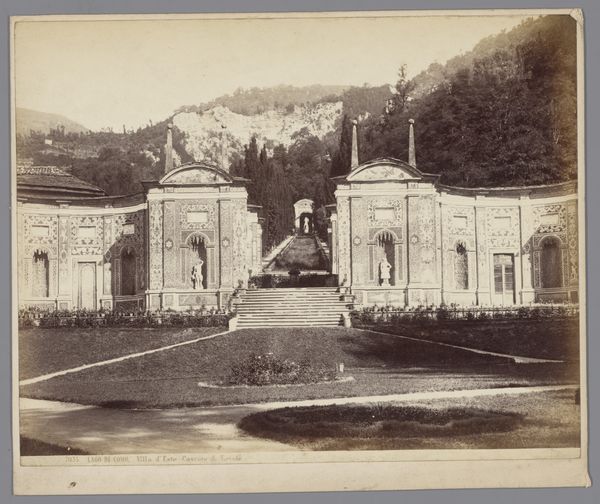
photography, architecture
#
impressionism
#
landscape
#
historic architecture
#
traditional architecture
#
photography
#
historical photography
#
19th century
#
architecture
#
historical building
Dimensions: height 210 mm, width 273 mm
Copyright: Rijks Museum: Open Domain
Curator: What a beautifully composed image! This photograph, taken by Étienne Neurdein, presents the Muziekkiosk bij het Monte Carlo Casino, placing us somewhere between 1870 and 1900. Editor: There’s a strange stillness to it, isn’t there? Despite all that potential activity in the bandstand, it feels so isolated, almost sterile. Curator: Well, think of the context. Monte Carlo at this time was the playground for Europe’s elite. The Casino itself, a symbol of both extravagant wealth and, arguably, moral decay. Neurdein likely aimed to capture a moment of ordered beauty, masking some of the social realities behind the veneer. Editor: Exactly! The kiosque isn’t just a place for music. It represents a stage, not only for performances but also for societal hierarchies. Who was permitted to gather there? Who was excluded? And, importantly, whose leisure was subsidized by the exploitation of others? Curator: The very structure suggests that. The ornate ironwork, almost cage-like, frames the musicians but also contains them. The gaze is always directed. There are always spectators, implicitly endorsing the whole social system. Editor: It speaks volumes, doesn’t it? This image functions as both a depiction of aesthetic beauty and an emblem of social disparity. The quiet composition barely conceals the social tensions bubbling beneath. Curator: Indeed. Looking closely, one could ask whose narrative does Neurdein's lens promote? Was this capturing a carefully orchestrated performance of the belle epoque, consciously ignoring other socio-political currents? Editor: The history of photography, in general, isn't only technical or artistic. Considering the subjects photographers choose, the vision and politics intertwined within the choice, enriches and problematizes interpretations such as Neurdein's photograph of this musical stage. Curator: Agreed. Considering that it’s far more than just architecture documentation enables critical thinking about both history and current issues of equality. Editor: Precisely. By acknowledging its contradictions, its beauty and underlying social currents, we can actively understand our historical image archives with an enriching historical framework.
Comments
No comments
Be the first to comment and join the conversation on the ultimate creative platform.
